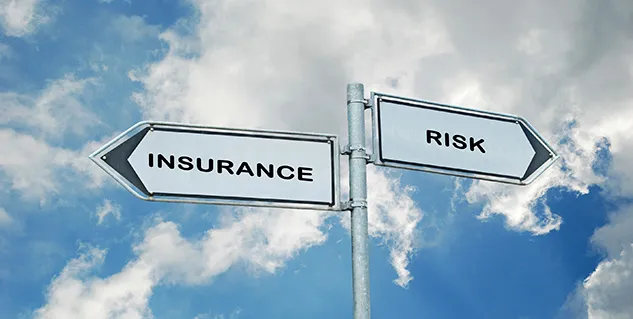Export credit guarantees protect Finnish enterprises against risks in Russia

Russia’s economic situation creates uncertainty for Finnish enterprises’ exports to Russia. Demand for Finnvera’s export credit guarantees for business in Russia increased in early 2015.
Russian banks and enterprises do not currently have the same access to financing on the international market as before, and enterprises’ capacity to meet their financial obligations has weakened. Higher credit loss risks also hinder Finnish enterprises’ exports to Russia According to Finnvera, Finnish export enterprises’ demand for export credit guarantees for Russia has increased in early 2015.
Raisioagro Ltd, a Finnish manufacturer of animal feeds, has exported its products to Russia since the 1990s and has used Finnvera’s credit insurance since the early 2000s.
Sales Director Erik Norrgård of Raisioagro explains that successful trading in Russia requires, in particular, trust between the seller and the buyer. Personal relations are very important. Thanks to its long experience, Raisioagro has managed to find reliable and well-established partners in Russia, but the company also has experience of situations where the buyer has not paid as agreed.
“In the first case, payments were made as agreed for a fairly long time, but when the volumes of goods increased, payment transactions ceased. This was followed by long explanations and promises and, in the end, the buyer’s bankruptcy. In the second case, the company’s excessive growth depleted the company’s liquidity. The management changed and the end result was the same: payments ceased and the company went bankrupt,” Norrgård says.
When the buyers’ insolvency became evident, Finnvera’s export credit guarantees eased Raisioagro’s situation. On the basis of the guarantees, Raisioagro was paid compensation for the sales receivables it did not repatriate.
Creditworthiness of Russian enterprises under closer scrutiny
According to Finnvera’s Claims Adviser Tarja Junno, Finnvera received about 30 claims for compensation in 2014. In the current year, the figure so far is about ten. At present, most of the claims are associated with Russian buyers.
“As a rule, the reason behind a claim is the buyer’s insolvency or reluctance to pay. Often the exporter has said that the reason for the buyer’s default on payments is Russia’s economic situation,” Junno says.
Eeva-Maija Pietikäinen, Team Leader, Finance, at Finnvera, says that, for an enterprise engaged in foreign trade, consideration of buyer risks and the buyer’s solvency is part of risk management. In the case of weak buyers, advance payments or otherwise secure payment terms are recommended.
“If payment time is granted, insuring credit risks is part of risk management. In other words, it can be compared to property insurance. Unprotected risks may become fatal for the enterprise’s cash flow and profitability,” Pietikäinen cautions.
Finnvera has tightened its guarantee policy vis-à-vis Russia, and the exposure trend and repayment times of transactions with Russian partners will be monitored closely. Export credit guarantees continue to be granted, but Finnvera will thoroughly investigate Russian buyers’ creditworthiness and will pay particular attention to buyers’ capacity to withstand fluctuations in the exchange rate of the rouble and in interest rates.
In addition, Finnvera checks that the buyer companies and their owners are not on the list of EU sanctions. Exporters are requested to provide assurance that the products exported are not under export restrictions and that the necessary export permits are in order.
Differences in corporate culture and legislation create challenges
According to Erik Norrgård, exports to Russia are complicated by the Russian corporate culture, where it is very difficult to obtain access to companies’ managers. In addition, the rapid growth and indebtedness of companies pose risks to commerce. Norrgård characterises Russian legislation as challenging.
“Information is splintered and, for instance, different customs districts may apply differing practices. It may also be difficult to obtain accurate information about the buyer company’s actual situation, since especially smaller undertakings are not necessarily used to being asked to show their financial statements,” Norrgård says.
Despite the challenging economic situation in Russia, Raisioagro plans to increase its sales there. More than before, however, the company will make use of its familiar contacts and will focus on existing agreements.
Norrgård recommends that enterprises planning exports to Russia take out guarantees. It is also advisable to prepare thoroughly for the initial investigation and for any barriers to sales that might exist. Norrgård says that restrictions posed by the customs and other authorities often come unexpectedly and at a short notice.
“It’s good to be prepared for the fact that, in particular, buyers associated with primary production do not necessarily buy anything without some sort of a limit. The risk must always be weighed case-by-case. The Russians are a proud people, and it is good for neighbours across the border to recognise these realities for commerce. Especially in these times, Finnvera and other additional assistance are needed in exports to Russia.”
Export credit guarantee:
- By using export credit guarantees, exporters and providers of financing for exports can protect themselves against credit losses that may arise when a foreign customer is granted payment time. If needed, it is also easier to arrange financing to a foreign customer for purchasing the export product when Finnvera covers the credit risk.
- Finnvera grants guarantees for countries with sufficient credit standing and assesses the creditworthiness of buyers and guarantors.
- The risks covered by export credit guarantees can be commercial, such as bankruptcy or reluctance to pay, or political, i.e. associated with the buyer’s country. Apart from the receivables, the guarantees also cover costs arising from recovery.
- Claims for compensation are submitted in writing, either as a free-form application or on the claims form provided by Finnvera. Once the application has arrived , Finnvera starts the claims process to determine whether the general guarantee terms and the terms of the guarantee agreement, such as the prescribed times for filing the claim and the completion of export declarations, have been met.
